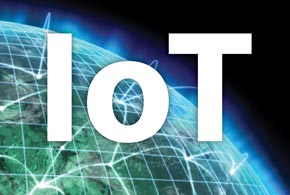A key selling point for the internet of things (IoT) is an ability to transform a business. By connecting sensors, devices and physical objects, it’s possible to understand things in a way that would have been unimaginable in the past.
At Ward Aquafarms—a 10-acre 1,000-cage North Falmouth, Mass., commercial farm and research facility that grows Eastern Oysters, Quahogs (Hard Clams), Atlantic Bay scallops and Sugar Kelp for restaurants and grocery stores across the United States—IoT technology is ushering in a new era of productivity and food safety.
“It is critical to keep raw shellfish below 45 degrees Fahrenheit in order to ensure they are free from bacteria and safe to consume,” explains Daniel Ward, founder and co-owner of Ward Aquafarms and a research fellow at the nearby Marine Biology Laboratory. “The growth rate of bacteria is heavily dependent on water temperature, which can be a problem from May to October.
“We have to harvest the product as rapidly as possible, keep it in the shade and get it on ice immediately. The number-one reason people get sick is that oysters were not stored at the correct temperature.”
Creating a System to Monitor Quality and Safety
Rather than leaving matters to chance and facing a possible FDA shutdown, Ward worked with a handful of technology vendors, including Verizon, to create a system to monitor the quality and safety of his oyster harvest from aquafarm to table. Cameras and sensors record activity and track the temperature, location, date and time, so the company can determine at any moment whether products fall outside critical thresholds.
“We wanted to have a way to verify that oysters and shellfish had been handled correctly, without any chance that someone could modify the system,” Ward explains. “We now have video evidence of what day shellfish were harvested, how long they were out of the water, and that they met essential criteria.”
Ward and others view a live video stream of the harvest on an iPad or computer as it is transmitted from a Mobotix AG dual-lens camera equipped with a radiometry sensor. The same device uses a thermal imaging lens to display water temperatures that range from blue to red, the latter indicating heat.
All the video and associated data is sent to the cloud over the 4G network, where it is stored in a hosted Verizon database. The system uses a cradle point solar-powered router and taps APIs through the Verizon ThingSpace development platform.
Once a product is shipped, software correlates video with temperature, light, location, date and time information using a tag, and then ties it to real-time tracking information. “The system sends an alert if conditions fall outside our designated criteria,” Ward says.
Setting up and configuring the system was a simple and straightforward process. “It took only about a day to get everything running,” Ward says. The facility has been using the equipment since April.
Ward Aquafarms is now rolling out technology to track microalgae growth by pulling satellite imagery and other data from the National Oceanic and Atmospheric Administration (NOAA). “By putting our GPS coordinates into the Verizon cloud, we can correlate in real time chlorophyll data and temperature data and understand the current growth factor for microalgae,” he explains.
Ward plans to add other environmental sensors to measure factors such as turbidity and dissolved oxygen levels. As a result of IoT technology, “We are able to run the business better and maximize food safety,” he reports.









